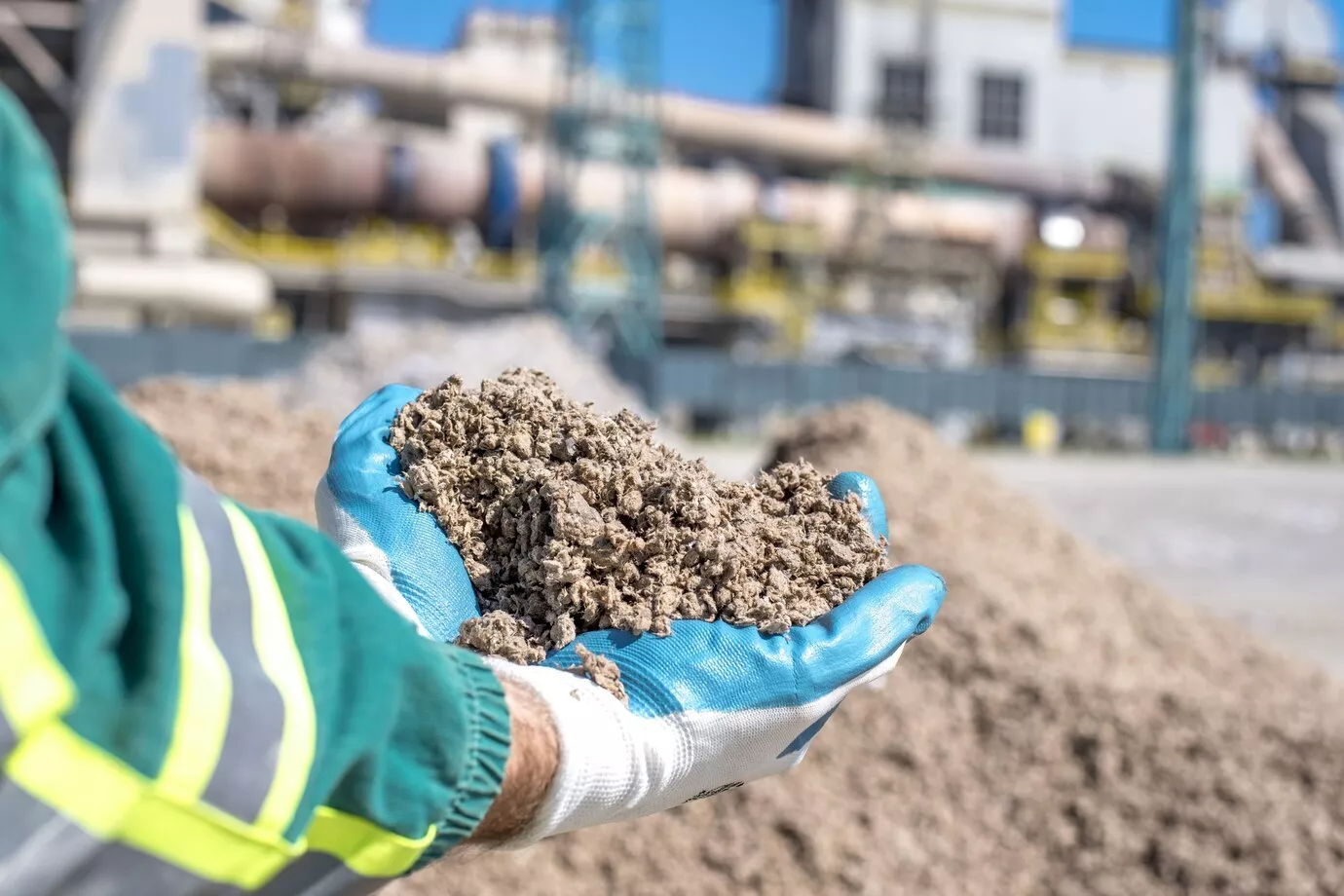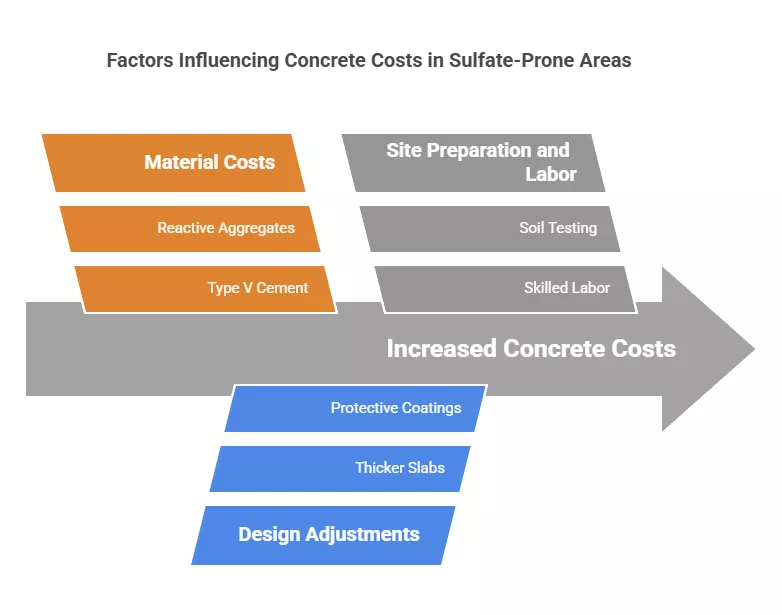Ranked #1 in Accurate and Reliable Estimation Services
A Fastest Turnaround 24 Hours!
Ranked #1 in Accurate and Reliable Estimation Services
A Fastest Turnaround 24 Hours!
Ranked #1 in Accurate and Reliable Estimation Services
A Fastest Turnaround 24 Hours!
Ranked #1 in Accurate and Reliable Estimation Services
A Fastest Turnaround 24 Hours!

Building in areas with high-sulfate soil can feel like navigating a minefield. Sulfate-rich soil silently attacks concrete, leading to cracks, crumbling, and even structural failure if not properly addressed. But with careful planning and the right materials, you can avoid costly repairs and keep your project on track. This guide will walk you through the essentials of estimating concrete costs for high-sulfate regions, ensuring your project stays durable, safe, and budget-friendly.
High-sulfate soil isn’t just ordinary dirt—it’s soil packed with sulfate salts that react chemically with concrete. Over time, these reactions cause the concrete to expand, crack, and weaken, much like rust corroding metal. The damage isn’t always immediate, which makes it easy to overlook until it’s too late.
Two critical red flags signal high-sulfate soil risks. First, soil with sulfate levels exceeding 1,500 parts per million (ppm) is considered high-risk. These soils are common in coastal regions, deserts, and industrial zones. Second, visible signs like white, chalky residue (efflorescence) or cracks in existing structures often indicate sulfate damage. For example, a contractor in Arizona once used standard concrete for a warehouse foundation. Within two years, the floor developed extensive cracks, costing $50,000 to replace. Soil testing later revealed sulfate levels of 3,000 ppm—double the danger threshold.
Estimating concrete costs in sulfate-prone areas isn’t just about calculating cubic yards. It requires specialized materials, careful design, and thorough site preparation. Here’s a breakdown of what impacts your budget:
Sulfate-resistant concrete is non-negotiable. Type V cement, engineered to withstand sulfate attacks, costs 15–20% more than standard cement. However, blending it with supplementary materials like fly ash or slag can reduce costs while maintaining durability. Aggregates also matter—reactive materials like gravel can worsen sulfate damage, so opt for low-reactive options like limestone. Additionally, anti-sulfate admixtures, such as calcium nitrite, add 5–10 per cubic yard but significantly extend the concrete’s lifespan.
Sulfate-resistant concrete often requires thicker slabs and lower water-cement ratios. For instance, a 6-inch slab might need to be 8 inches thick in high-risk areas. Protective coatings like epoxy or polyethylene membranes are another layer of defense, adding 2–4 per square foot.
Soil testing is a critical first step. Geotechnical reports, which cost 500–2,000, reveal sulfate levels and guide mitigation strategies. If the soil is too risky, replacing it with clean fill dirt costs 30–50 per cubic yard. Skilled labor is also pricier—contractors experienced in sulfate-resistant techniques may charge 10–15% more than standard rates.

Never skip soil testing. Hire a geotechnical engineer to collect samples from multiple depths and analyze sulfate content and pH levels. If sulfates are moderate (300–1,500 ppm), you might save costs by using Type II cement instead of Type V.
Use this formula to estimate concrete volume: Volume (cubic yards) = Length (ft) × Width (ft) × Thickness (in) ÷ 324.
For example, a 20 ft x 30 ft slab at 6 inches thick requires 11.1 cubic yards of concrete. Factor in cost multipliers for sulfate-resistant materials: Type V cement adds 15–20%, and admixtures increase costs by 5–10 per cubic yard.
Skilled crews charge 45–75 per hour, with a typical 3-day pour costing 5,000–8,000. Equipment like concrete pumps or mixers adds 200–500 per day.
Always set aside 10–15% of your budget for surprises. Hidden sulfate pockets, weather delays, or design tweaks can quickly inflate costs.
Where you build significantly impacts expenses. In coastal Texas, high humidity accelerates sulfate damage, necessitating premium coatings and driving costs to 150–200 per cubic yard. In Arizona’s desert, importing cement adds 10–15 per cubic yard, but soil replacement is cheaper than in coastal zones. Meanwhile, Midwest industrial areas often leverage local fly ash suppliers to cut cement costs by 8–12%.
Estimating concrete costs for high-sulfate soil regions demands a blend of science, strategy, and foresight. Test the soil rigorously, invest in the right materials, and always leave room in your budget for the unexpected. If the process feels overwhelming, consider partnering with a concrete estimating service to handle the complexities while you focus on delivering a sturdy, long-lasting project.
Remember: A little extra effort today can save thousands—and countless headaches—down the road. Here’s to building smarter, not harder!
Possibly—if sulfates are under 1,500 ppm, Type II cement with fly ash may work. Always consult an engineer.
Between 150–250, depending on materials and location.
Absolutely. A concrete estimating service provides expertise to avoid budget overruns and ensures every detail—from soil prep to material ratios—is optimized.
0 Comments